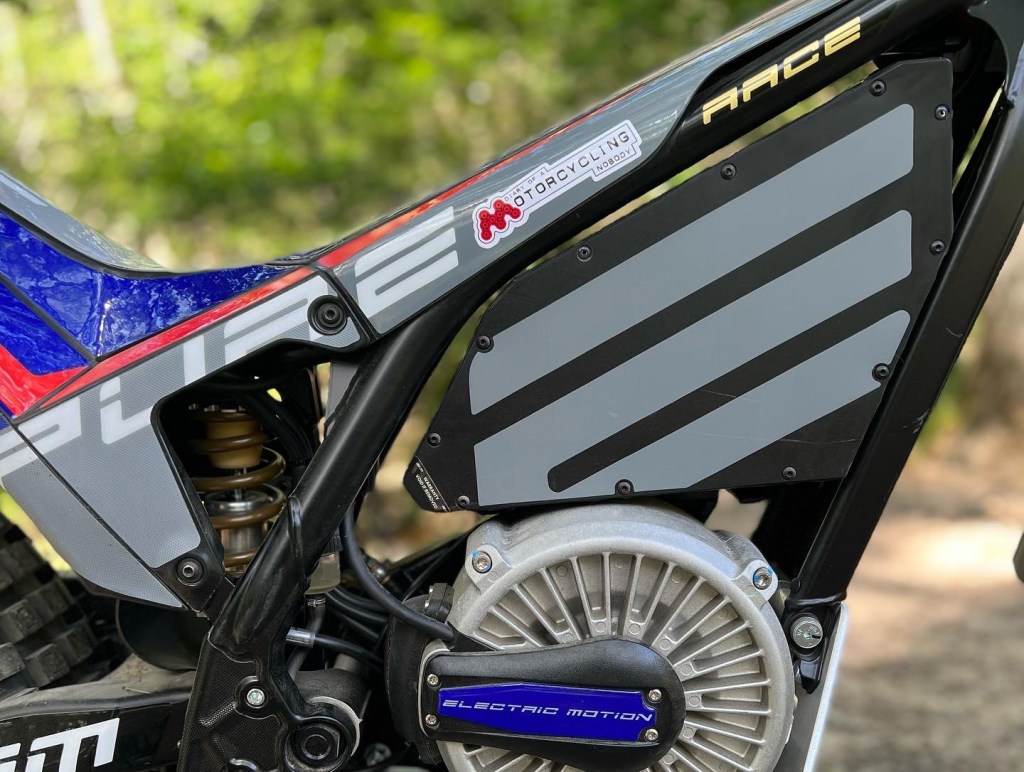
I read an interesting article in the mountain bike ‘zine EP2 (yes, a real hold-in-your-hands-small-magazine) and it was written by Guy Kesteven (GK) and entitled ‘Emotional engineering’. Without replicating the article here, I’m going to apply the same context illustrated by GK to a trials bike, and principally, the one I’ve just bought and ridden for the first time in a local, club trial.
I’m going to draw a clear parallel, family relationship here between the mountain bike (MTB) and the trials bike. We have seen a similar MTB-trials bike component development and performance evolutions in everything from suspension, to brakes, to tyres, to weight saving, to geometry and importantly, to how the rider feels and fits with the bike for ultimate control. Whilst an ‘analogue’ MTB is pedal only, the big development and market is with the eMTB. Smaller electric motors, better battery range and lower weight, traction control, ABS, gearboxes etc are all found on the latest eMTBs. The trials bike mass market is still petrol engine powered, and with either a 2 stroke or 4 stroke engine, which is what the trials talent and professionals are using at competition level.
Just like the MTB, both trials bike design and marketing focus is in the bond and feel between rider, the bike and the obstacle being ridden over. The feel and results that a rider has on a bike is a very emotional thing, which is where the term ‘Emotional Engineering’ comes in, because that’s what the engineering focus realises in terms of results and sales. Also, don’t forget the overall aesthetics of the bike either, which is another emotional engineering element.
Now, let’s take this a step further, but remain with the eMTB-trials bike development similarities, and introduce electric power to the trials bike, thus making it more sustainably acceptable, and quieter. Electric power is being promoted in all forms of transport, including trials bikes, as ‘the way to go’, which is a bit like the diesel over petrol story from 30 years ago, but hey…. Anyway, assuming that the electricity we use to charge our new electric trials bike is from sustainable sources, we have an additional and important layer to add to the emotional engineering thread.
I saw my my first electric trials bike about 6 years ago when a Swiss company started selling new trials bikes that they had removed the petrol engine from and had retro-fitted an electric motor and battery. I don’t think sales were big, but it was the start of the change. I mentioned in my last post (link at bottom) about my recent purchase of the Electric Motion (EM) EPURE RACE trials bike, which I think is the ultimate example of emotional engineering. The bike has the geometry, components and technology that matches a petrol-powered trials bike. It also looks good. However, even with several engine power maps, a clutch and other normal features, it doesn’t ride like a petrol bike, the feel is different, and it looks a bit different to all of the other bikes queuing up to tackle a trials section. This means a big, big change to gain acceptance in the trials world and is the next emotional engineering and marketing challenge for the sector, as well as the fact that the new electric technology forces pricing at premium bike levels, but hey! this is normal in any new technology or product pricing.
I did my first trial on the bike this weekend and whilst I will cover that experience with some other events in the next post, it became clear to me how my new EM EPURE RACE (long name I know…) has proven itself to me as the ultimate trials bike example of emotional engineering. Remember, I’m new two trials and I realised in this weekend’s trial why I bought this electric bike over a petrol bike. Firstly, it is quiet. Quieter than the hairdryer another petrol-powered rider jokingly compared it with. Whilst sitting in a queue for a section of other petrol trials bikes, I had to breathe in their fumes as the engines were ticking over or being revved. The person behind me just got fresh air out of my bike. As the bike doesn’t stall, and as a novice, I don’t have that annoying and energy sapping mid-stage kick start procedure required when a petrol bike needs starting. After 3 hours and 4 laps of the trials event using the middle power map, I still had 81% battery range left at the end. My van doesn’t smell of petrol and nor do I.

The other big change is about that big emotional engineering challenge ‘rider feel’. I’ve done a few practices on this bike, one club event and remember, whilst I’m not new to motorcycles, I am new to trials, so I haven’t developed any reasonable level of skill and my ‘feel’ with the bike, specifically, the performance characteristics of the electric power. And finally/crucially, it is a hell of a lot of fun riding my new EM bike. I think that this last word ‘fun’, is the ultimate outcome of something that is well emotionally engineered. More posts to come with my electric trials life!
Many thanks to PWPics for the feature photo image🙏
Link to my first post about this bike https://diaryofamotorcyclingnobody.com/inch-perfect-trials/









I like new version and builtifu e-bike.